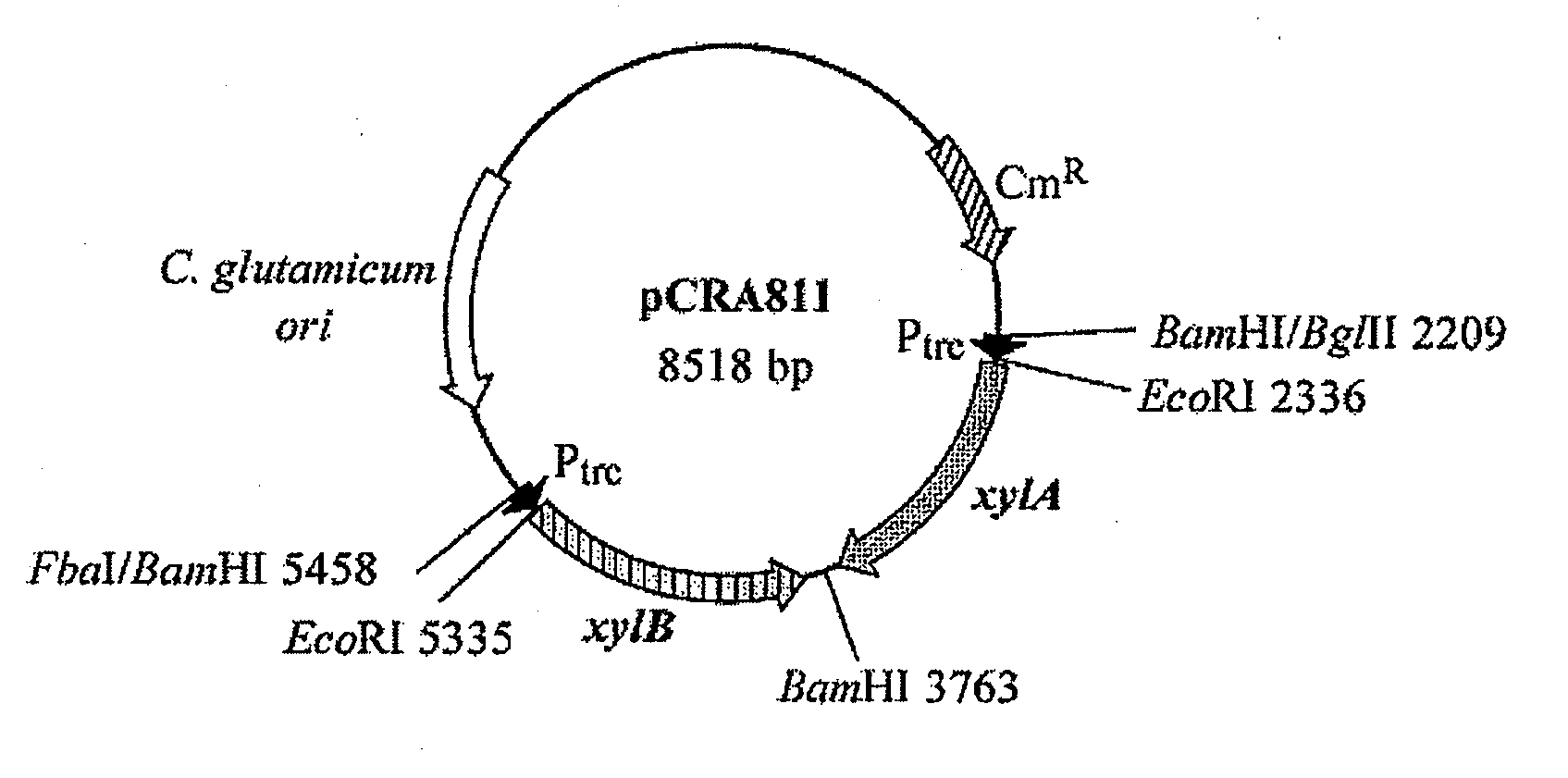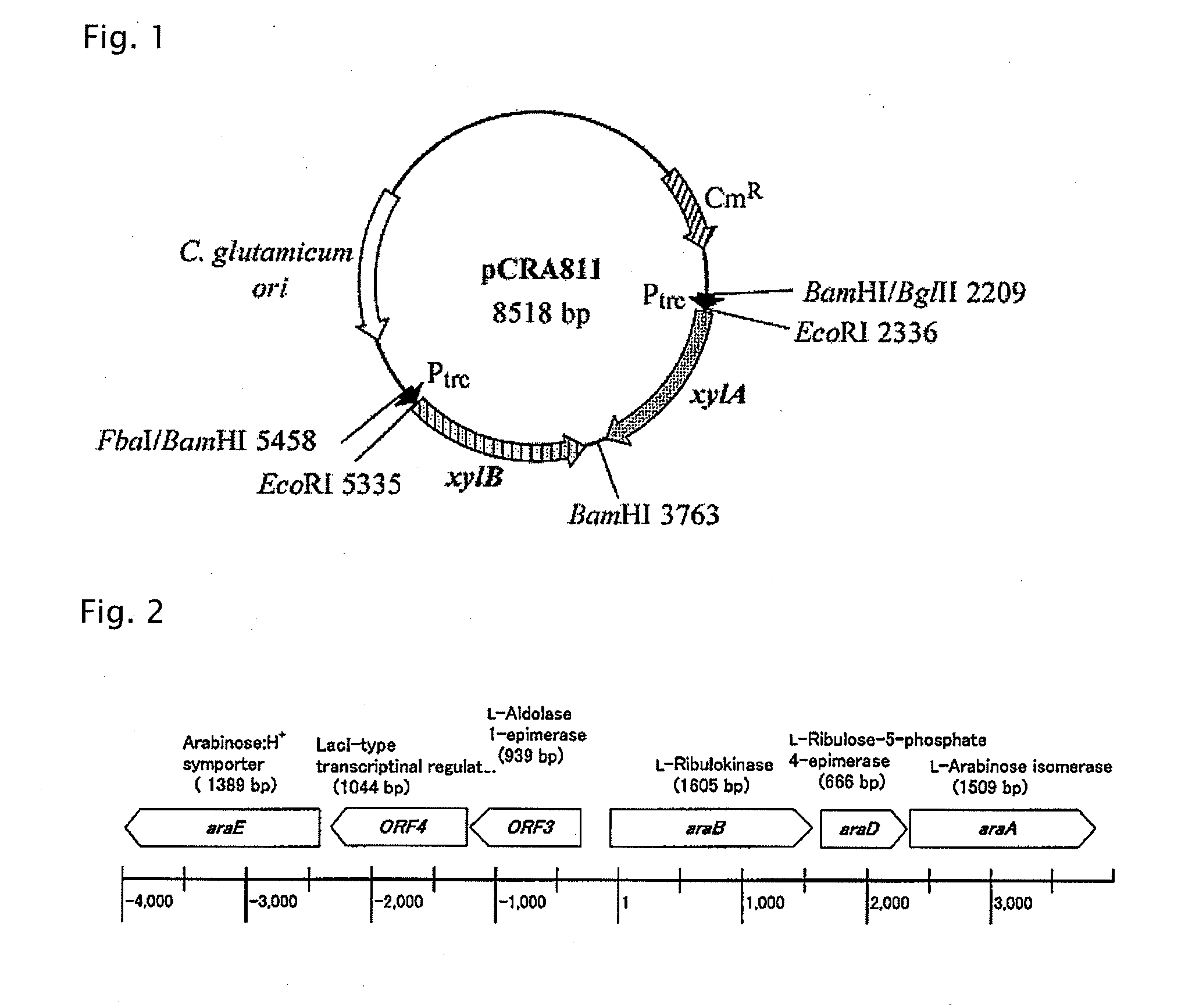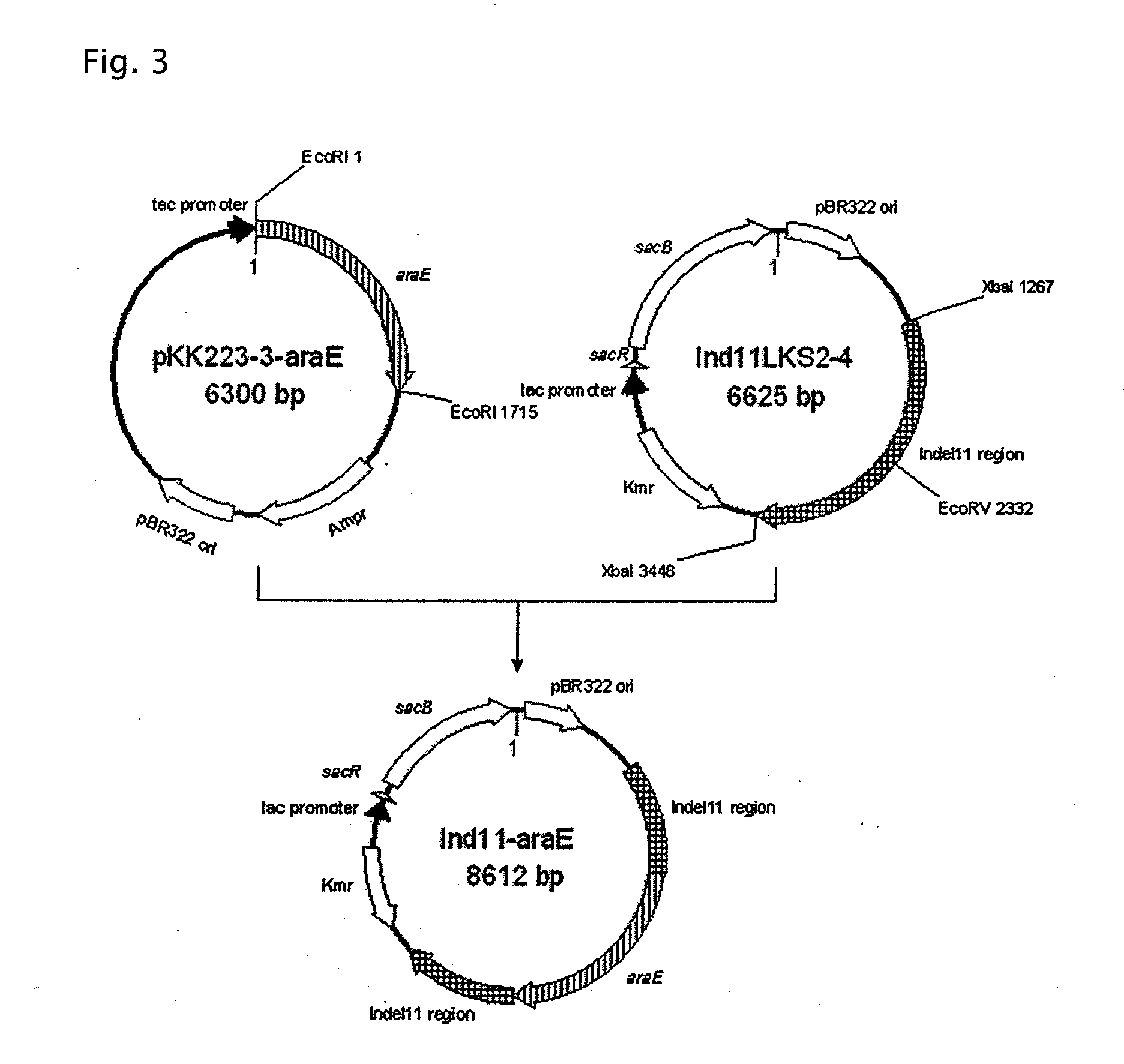Coryneform bacterium transformant having improved d-xylose-utilizing ability
a technology of d-xylose and transformant, which is applied in the field of d-xyloseutilizing technology, can solve the problems of insufficient d-xylose consumption rate (utilization rate), reduced d-xylose utilization rate, etc., and achieves the effect of effective utilization of d-xylose, effective utilization of cellulosic biomass resources, and equivalent utilization ra
- Summary
- Abstract
- Description
- Claims
- Application Information
AI Technical Summary
Benefits of technology
Problems solved by technology
Method used
Image
Examples
example 1
Creation of Corynebacterium glutamicum R / pCRA811 and Corynebacterium glutamicum Ind-araE / pCRA811
[0126](1) Method for Construction of Plasmid pCRA811
a) Extraction of Chromosomal DNA from Escherichia coli JM109
[0127]Escherichia coli JM109 was inoculated in L medium (10 g of trypton, 5 g of yeast extract, and 5 g of NaCl were dissolved in 1 L of distilled water) with use of a platinum loop, and cultured with shaking at 37° C. until logarithmic growth phase, and then cells were collected. According to the instruction manual, chromosomal DNA was recovered from the collected cells with use of a DNA extraction kit (trade name: GenomicPrep Cells and Tissue DNA Isolation Kit, made by Amersham).
b) Cloning of D-Xylose Isomerase Gene (xylA) and D-Xylulokinase Gene (xylB) from Escherichia coli
[0128]A DNA fragment comprising a xylose isomerase gene (hereinafter abbreviated as xylA) (SEQ ID NO: 1) and a D-xylulokinase gene (hereinafter abbreviated as xylB) (SEQ ID NO: 2) from Escherichia coli was...
example 2
Aerobic Culture of Corynebacterium Glutamicum R / pCRA811 and Corynebacterium Glutamicum Ind-araE / pCRA811 in a Culture Medium Containing D-Xylose as a Single Carbon Source
[0196]Corynebacterium glutamicum R / pCRA811 and Corynebacterium glutamicum Ind-araE / pCRA811 both prepared in the above Example 1 (5) were separately used for investigation of decrease in D-xylose and of cell proliferation in BT liquid medium containing D-xylose as a single carbon source. An inoculation loop of each of the two strains was inoculated in a separate test tube containing 10 mL of a medium having the same ingredient composition as that of A liquid medium except that it further contains 5 μg / mL of chloramphenicol, and aerobically cultured at 200 rpm at 33° C. for 13 hours. After washed with the BT culture medium twice, the strain was inoculated in 100 mL of BT culture medium containing 25 mM of D-xylose as a single carbon source so that the OD610 became 0.2. The concentration of D-xylose was repeatedly check...
example 3
Sugar Consumption and Lactic Acid Production by Corynebacterium Glutamicum R / pCRA811 and Corynebacterium Glutamicum Ind-araE / pCRA811 Using D-Xylose as a Single Substrate Under Reducing Conditions
(1) Aerobic Culture Proliferation
[0197]Corynebacterium glutamicum R / pCRA811 and Corynebacterium glutamicum Ind-araE / pCRA811 prepared in Example 1 (5) and stored at −80° C. in a freezer were separately applied to A agar medium for plate culture (the ingredient composition is the same as that of the above A liquid medium except that A agar medium has 1.5% (w / v) of agar) containing 5 μg / mL of chloramphenicol, and left stand in the dark at 33° C. for 12 hours.
[0198]An inoculation loop of each of the two kinds of Corynebacterium strains each grown on a plate as above was inoculated in a separate test tube containing 10 mL of A liquid medium containing 5 μg / mL of chloramphenicol, and aerobically cultured at 200 rpm at 33° C. for 12 hours.
[0199]The two kinds of Corynebacterium strains each grown un...
PUM
| Property | Measurement | Unit |
|---|---|---|
| Tm | aaaaa | aaaaa |
| temperature | aaaaa | aaaaa |
| temperature | aaaaa | aaaaa |
Abstract
Description
Claims
Application Information
 Login to View More
Login to View More - R&D
- Intellectual Property
- Life Sciences
- Materials
- Tech Scout
- Unparalleled Data Quality
- Higher Quality Content
- 60% Fewer Hallucinations
Browse by: Latest US Patents, China's latest patents, Technical Efficacy Thesaurus, Application Domain, Technology Topic, Popular Technical Reports.
© 2025 PatSnap. All rights reserved.Legal|Privacy policy|Modern Slavery Act Transparency Statement|Sitemap|About US| Contact US: help@patsnap.com



